Living near North Carolina's wilderness means sharing space with black bears—an awe-inspiring yet real presence. Concern for safety is natural, but understanding their behavior can keep you and your family safe. Let’s explore how awareness and respect ensure peaceful coexistence with these majestic creatures.

Understanding Black Bear Activity in North Carolina: An Introduction
North Carolina’s vast forests and varied landscapes provide some of the best black bear habitat and support thriving black bear activity in the eastern United States. As rural and suburban areas grow and people spend more time outdoors, black bear activity in North Carolina has become a subject of both fascination and concern. Residents and visitors often notice bear cubs, signs of bear dens, or even the occasional bear wandering across a yard. Despite their growing visibility, black bears are generally afraid of humans and prefer to avoid bear contact whenever possible.
Grasping the patterns of black bear activity in North Carolina is crucial for ensuring personal safety and protecting local wildlife. With North Carolina now supporting one of the largest black bear populations in North America, understanding black bear home range, behavior, distribution, and seasonal movements is essential. Whether you’re hiking, camping, or simply living in areas where bears roam, understanding how to coexist can prevent conflicts and foster appreciation for these essential members of our ecosystem.
Living Among Black Bears: Safety Meets Curiosity
The presence of black bears in North Carolina is a testament to successful wildlife conservation and rich native biodiversity. These animals, often encountered with their bear cubs in spring or foraging for soft mast in late summer, are a natural part of the state’s ecosystem. Living alongside bears comes with both excitement and responsibility. While stories of bold bears rummaging through garbage bins or sightings in suburban neighborhoods capture headlines, the vast majority of bear encounters are uneventful—a brief sighting, a track in the mud, or distant noises at dusk.
To minimize risk, it’s vital to strike a balance between curiosity and caution. Understanding the rhythms of bear activity develops respect, which in turn minimizes conflict. Residents can help keep both people and bears safe by securing food sources, learning the signs of nearby bear presence, and knowing what to do if an encounter occurs. As more people move into traditional bear ranges or enjoy outdoor recreation, fostering awareness of black bear habits strengthens the safety and enjoyment of North Carolina’s wild spaces.
"Respecting black bear activity in North Carolina helps minimize conflict and promotes coexistence." – NC Wildlife Expert
For those interested in how North Carolina communities are adapting to changes in their environment and wildlife presence, the impact of local healthcare access can be just as significant as wildlife management. A recent look at what happens when a county hospital faces closure reveals how residents rally together to protect essential resources, highlighting the importance of community resilience in the face of evolving challenges.
Black Bear Activity in North Carolina: Distribution and Population Trends
Black bear populations in North Carolina have rebounded dramatically over recent decades, making the state home to some of the densest black bear populations and highest bear activity in the eastern United States. Both the mountainous western regions and the coastal plain are hotbeds of black bear activity, with numbers exceeding those found in many other states. While smaller populations persist across the Piedmont, these bears generally prefer areas with dense cover, hollow logs, and access to food sources such as acorns or soft mast.
Thanks to the efforts of wildlife biologists and the NC Wildlife Resources Commission, our knowledge about the home range and movement patterns of black bears in North Carolina is better than ever. Female bears and their cubs tend to remain in smaller, consistent territories, whereas male bears can travel vast distances, especially during mating season or in search of food. Urban development and changing land use continue to influence the distribution of bears—occasionally bringing them into contact with new communities. Understanding these distribution patterns and black bear home range is the first step to reducing unwanted encounters and appreciating the important ecological role that Carolina bears play.
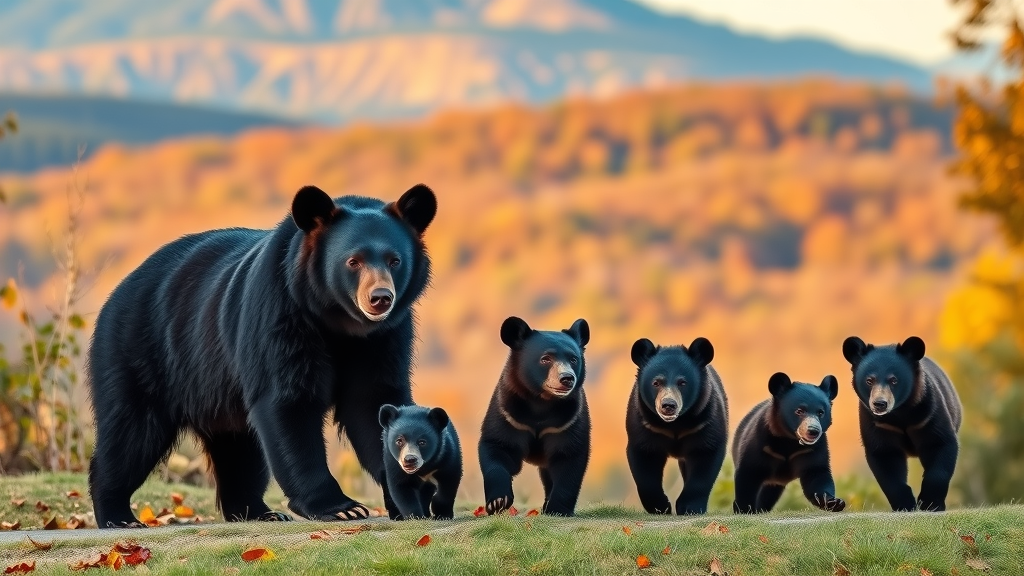
Black Bear Population and Home Range by Major Regions in North Carolina
Region |
Estimated Bear Population |
Average Home Range (Males) |
Average Home Range (Females) |
Key Habitat Features |
|---|---|---|---|---|
Coastal Plain |
8,000+ |
20–50 sq. miles |
2–10 sq. miles |
Swamps, dense forests, abundant food |
Mountains |
6,000–7,000 |
10–30 sq. miles |
2–8 sq. miles |
Mixed hardwoods, dense cover, rugged terrain |
Piedmont |
Few hundred |
40–80 sq. miles |
5–15 sq. miles |
Patchy forests, suburban edges, less dense cover |
What Part of North Carolina Has the Most Black Bears?
When it comes to sheer numbers, the Coastal Plain and Mountain regions stand out as North Carolina’s leading bear habitats. The flat, forested swamps of the east and the rugged, wooded slopes of the west offer plentiful resources—food, water, and undisturbed den sites—ideal for sustaining high bear densities. These regions are famous among wildlife researchers for supporting thriving bear populations and for the remarkable size of some bears, particularly those found near the coast.
Bears in the Piedmont region are far less common, with fragmented patches of suitable habitat surrounded by development. In contrast, remote areas of the mountains and coastal swamps regularly host black bear dens, with cubs safely raised away from human disturbance. Whether you’re spotting bear tracks after a rain or hearing about bear activity near campgrounds, knowing the “beariest” regions helps residents and outdoor enthusiasts remain alert and prepared whenever venturing into potential bear territory.
Answer: Coastal Plain and Mountain Regions Lead in Bear Population Density
Exploring Bear Activity Patterns: When and Where to Be Alert
Understanding when black bears are most active in North Carolina can help residents and visitors reduce their chances of unwanted encounters and better anticipate black bear activity. Like many wildlife species across North America, black bears follow natural activity patterns tied to food availability, weather, and the rhythms of day and night. The majority of bear movement—whether searching for food, marking territory, or guiding bear cubs—is concentrated in the early morning and late evening hours. This behavior, known as being crepuscular, allows them to avoid the heat of midday and reduce exposure to potential dangers, including humans.
Bear activity ramps up in the spring as bears leave their dens and declines as winter approaches. Autumn is an especially busy time, with bears preparing for denning by feeding heavily on acorns, berries, and soft mast. Hikers, campers, and rural homeowners should maintain heightened awareness during these transition periods and whenever they are outdoors at dawn or dusk. Learning the specific times and places of peak bear activity helps everyone enjoy North Carolina’s wild spaces with peace of mind.
What Time of Day Are Bears Most Active in NC?
Across North Carolina, black bear sightings and signs are most commonly reported at dawn and dusk. These are the hours when bears take advantage of reduced human activity to forage, travel, and interact with other bears. It’s not unusual to spot bear cubs exploring with their mothers or an adult bear crossing remote roads in the misty light of morning. Activity tapers off in the heat of the afternoon and resumes as cool evening air returns.
This crepuscular habit means outdoor enthusiasts planning early hikes, runs, or fishing trips should be particularly vigilant and take preventative steps, such as making noise and storing food securely. Those who live in rural or suburban bear ranges might notice more bear denning and feeding signs around property edges at these times. Simply put, the golden rule is to be most alert whenever natural light is changing—at sunrise and sunset—across forests, trails, and neighborhoods bordering wild lands.
Answer: Black Bears Are Most Active at Dawn and Dusk Throughout North Carolina
Signs of Black Bear Activity in North Carolina: Recognizing the Presence
Effectively identifying signs of black bear activity in North Carolina is essential for both safety and curiosity. Black bear activity in North Carolina often leaves behind telltale signs for sharp-eyed observers to recognize local black bear presence. Whether it’s a muddy paw print on a hiking trail, piles of bear scat near berry bushes, or claw marks on a favorite tree, these traces provide valuable information about recent bear movement. Bears are opportunistic foragers, known to investigate garbage bins and bird feeders in both remote areas and suburban yards.
For residents, recording the location and timing of these signs can provide insight into local bear patterns and help avoid unwelcome run-ins. Outdoor enthusiasts, especially those venturing into known bear territories, should always be on the lookout for natural evidence of bears and be prepared to change plans if fresh signs are found. Understanding these markers is a key aspect of living safely amid thriving black bear populations across the state.
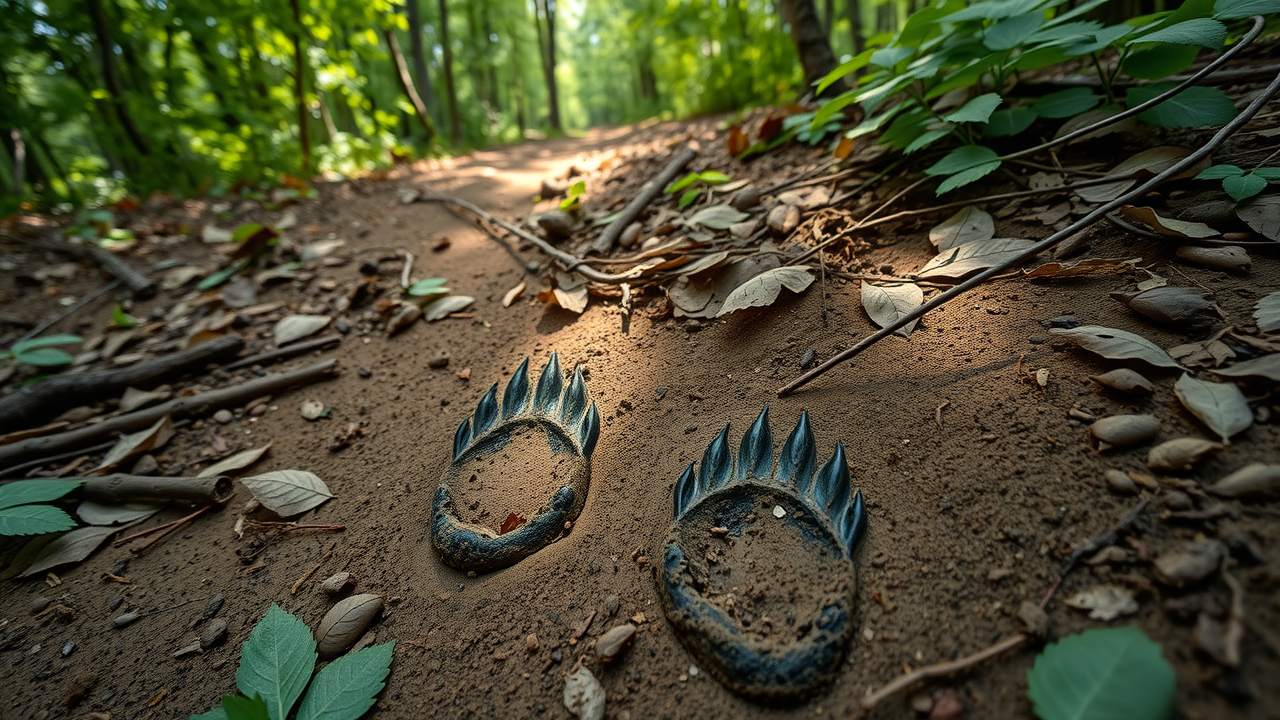
How Can You Tell if a Black Bear Is Near You?
Recognizing the signs of black bear activity can turn anxiety into informed vigilance. Bears leave many subtle and obvious clues of their recent presence: tracks shaped like large canine prints with a visible pad and five toes, dark tubular scat packed with berries or seeds, and trees scarred with claw marks or rubbed smooth by scratching. In residential areas, tipped-over garbage cans, raided bird feeders, or garden damage are common indications of a bear’s visit.
Bears possess a remarkable sense of smell—far superior to that of humans—and can detect food sources from a distance, leading to encounters in campgrounds or backyards. If you see multiple signs close together, such as tracks and fresh scat, it’s wise to assume a bear may be nearby. Practicing caution and respecting these signals not only keeps you safe but also supports the well-being of North Carolina’s black bear population by helping both humans and bears avoid unnecessary conflict.
Answer: Look for Tracks, Scat, Marked Trees, and Disturbed Food Sources
Bear tracks and prints
Bear scat
Damaged bird feeders or garbage bins
Claw marks on trees
Sounds and sightings at dawn or dusk
Are Bears a Problem in North Carolina? Risks and Realities
While North Carolina’s abundant black bear population is a conservation success story, it does raise questions about safety and potential problems within local communities. Bear activity in populated areas can lead to incidents ranging from minor property damage—like rummaging through garbage or raiding gardens—to rare but serious encounters. Fortunately, black bears are naturally wary and afraid of humans. Direct aggression is extremely uncommon, with most conflicts resulting from bears’ attraction to accessible food sources.
Education and awareness are key to managing the small but real risks posed by black bears in North Carolina. Human behaviors, such as leaving food outside or failing to secure trash, are far more likely to encourage repeat visits than any inherent aggression from the animals. Wildlife biologists emphasize that coexistence is not only possible but necessary as bear ranges expand. By respecting bears’ need for habitat and adapting our practices, we can reduce nuisance encounters and keep both bears and people safer in the long run.

The Impact of Black Bears on Local Communities
Black bears have a complex relationship with local communities throughout North Carolina. In rural areas, residents may treat occasional sightings as routine, taking basic precautions like storing food securely or bringing pets in at night. In suburban edge zones—where bear habitat and human activity overlap most—reports of bear cubs or adults in driveways, near schools, or at public parks draw greater attention and can prompt anxiety.
Despite the headlines, it’s important to put risks in perspective. Most negative encounters stem from bears losing their natural wariness after repeated access to food in human-dominated spaces. Through education campaigns, regulations on feeding wildlife, and proactive action by both individuals and local governments, communities can keep both people and bears safe. The black bear remains a powerful symbol of North Carolina’s wild heritage—one best protected by shared awareness and effort.
Coexisting with Black Bears: Tips for Safety in North Carolina
Successfully sharing North Carolina with black bears hinges on collective responsibility and practical habits. Everyone—whether homeowner, camper, hiker, or visitor—plays a part in minimizing bear attractants and understanding how to react in the event of an encounter. From proper food storage to safe enjoyment of wild spaces, proactive strategies make coexistence possible, reducing the temptation for bears to seek easy meals near humans.
Educating children and guests about bear awareness, reporting repeated sightings to wildlife authorities, and supporting community bear-proofing initiatives can have a dramatic effect. Simple actions and basic knowledge—especially in high activity seasons—ensure a safe experience for all and promote a deeper respect for one of North Carolina’s most remarkable wild residents.
Secure food and trash
Do not feed black bears
Keep bear cubs and pets apart
Understand bear behavior and activity
Seasonal Shifts in Black Bear Activity in North Carolina
Black bear activity is not static—it varies significantly with the seasons. After emerging from bear dens in spring, hungry bears set out in search of food, first seeking whatever is available and later focusing on berries and soft mast as summer progresses. In fall, a period known as “hyperphagia” drives bears to eat nearly nonstop, fattening up on acorns and other nuts to prepare for winter denning. During winter, bear activity slows as most retreat to dens, though it’s not uncommon for some bears in milder coastal regions to remain semi-active, foraging on warm days.
The changing needs of bears in each season mean that the risk of encountering bears fluctuates as well. Late spring through early fall brings the highest level of bear sightings, especially where food is plentiful or human developments border wild habitats. Understanding these cycles helps residents and outdoor lovers know when to be especially vigilant and how to adapt their behavior to keep everyone safe.

North Carolina |
Black Bear Activity |
by Season |
|
Season |
Bear Activity Level |
Common Signs |
Safety Focus |
|---|---|---|---|
Winter |
Low (denning) |
Bears rarely seen, den locations in hollow logs or dense cover |
Minimize outdoor food attractants |
Spring |
Rising (emerging from dens) |
Fresh tracks, scat, increased sightings near food sources |
Secure garbage, be alert for mothers and bear cubs |
Summer |
Moderate |
Bears foraging, cubs active, damage to gardens or feeders |
Use bear-proof containers, avoid bear feeding |
Autumn |
High (“hyperphagia”) |
Bears feeding intensively, heavy scat, disrupted acorn patches |
Be extra cautious outdoors, secure all attractants |
Black Bear Activity Around Communities in North Carolina
Understanding the Home Range of Black Bears in North Carolina
A black bear's “home range” refers to the area in which it spends the majority of its life in search of food, mates, and cover. In North Carolina, a bear’s home range can vary drastically depending on gender, age, and region. Male bears are known to roam vast territories—sometimes crossing miles of forest, fields, and even urban boundaries—to find resources and compatible mates. Female bears, especially those raising bear cubs, typically maintain smaller home ranges closer to reliable food and den sites.
Urban expansion has introduced unique challenges, bringing bears into what biologists call the wildland-urban interface. Here, bears may alter their normal patterns to take advantage of human-provided food, with some adapting to edge habitats and learning to navigate backyards and parks as part of their extended home range. Understanding these movements is essential to predicting bear activity, protecting property, and supporting the natural behaviors that sustain healthy bear populations across North Carolina.
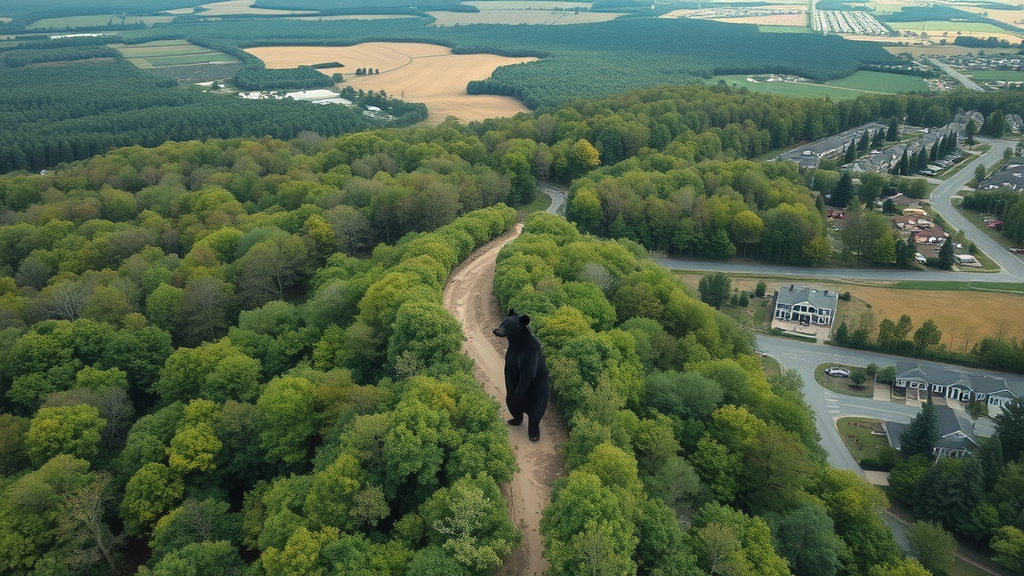
Key Differences Between Urban and Wild Bear Activity
Wild black bears residing in the vast forests and remote mountains of North Carolina follow traditional seasonal and territorial behaviors. Their diets center on native food sources, and human encounters are rare. In contrast, urban bears—those living on the edge of towns or cities—have adjusted their routines to exploit food opportunities found in garbage bins, gardens, or outdoor pet food. These bears often become bolder, are spotted at unusual times of day, and regularly cross paths with people.
Wildlife biologists warn that bears who repeatedly feed on human-supplied food can become habituated, losing their natural fear of humans and increasing the potential for nuisance behavior. The NC Wildlife Resources Commission encourages communities to bear-proof their neighborhoods, which helps reestablish healthy bear behaviors and reduces dangerous run-ins. Recognizing whether you are in wild or urban bear territory informs the best safety practices and helps everyone contribute to a safer, wilder North Carolina.
Expert Insights: How to Respond if You Encounter Black Bears or Bear Cubs
While the prospect of seeing a black bear in person is thrilling, knowing how to react is critical for safety. In most cases, bears are more curious or cautious than aggressive, especially if you avoid startling them or coming between a mother and her cubs. Experts recommend remaining calm, never running, and speaking in a confident but calm voice to identify yourself as a human, not prey.
If you meet a bear while hiking or near your home, stand tall, make yourself look larger, and slowly back away—never approach or attempt to feed the animal. Keep pets leashed or indoors if bears are nearby, and never try to “rescue” bear cubs that appear alone, as mother bears are usually close by and extremely protective. Taking the right steps ensures the safety of you, your family, and the bears themselves.
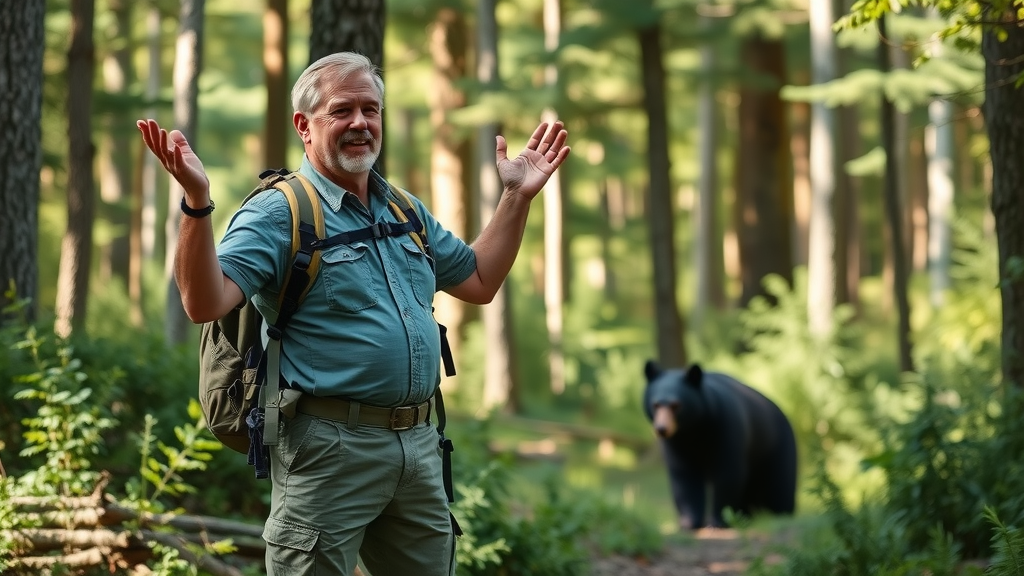
Remain calm and don’t run
Make yourself look large
Speak in a calm voice
Slowly back away
FAQs: Everything You Need to Know About Black Bear Activity in North Carolina
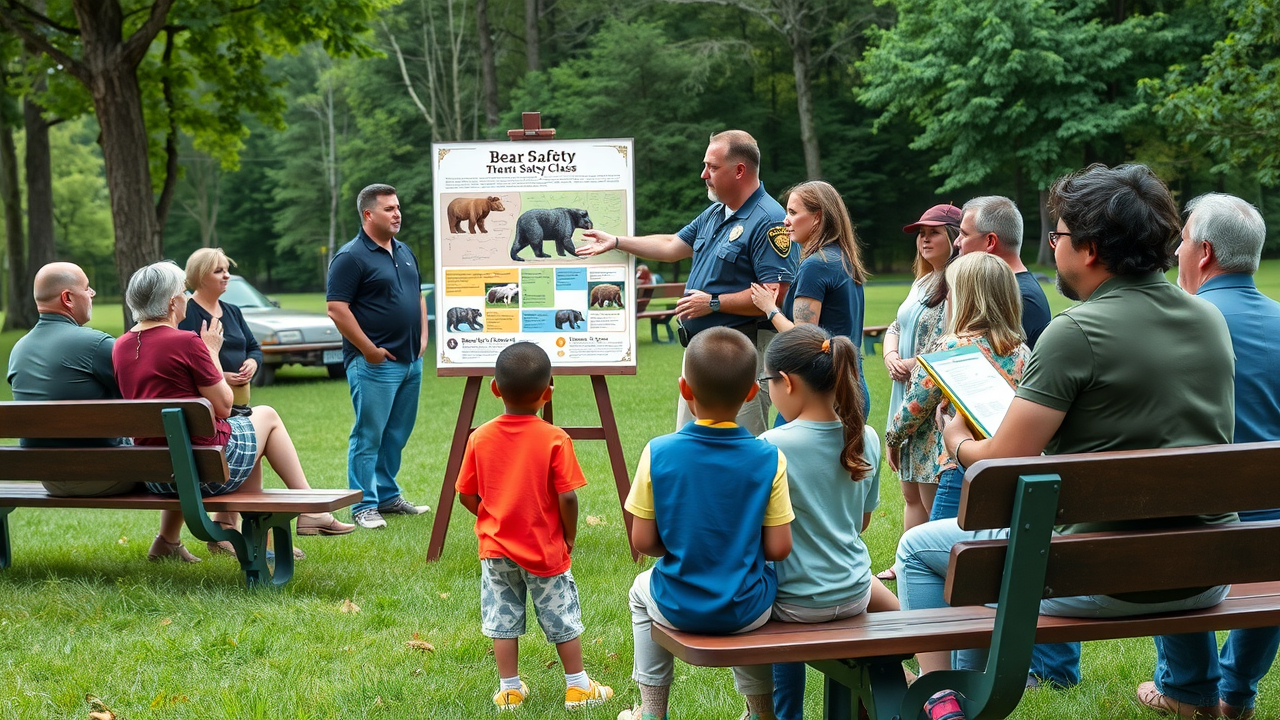
Are black bears dangerous to humans in North Carolina?
Black bears are not generally dangerous to humans. They are naturally timid and prefer to avoid contact with people. Most incidents are minor and related to food-seeking behavior rather than aggression. Serious bear attacks are extremely rare in North Carolina and almost always the result of defensive actions when a bear is startled or a person gets between a mother and her cubs.
What should you do if you encounter a black bear while hiking or camping?
If you encounter a black bear while hiking or camping, remain calm. Do not run or make sudden movements. Stand tall, wave your arms to appear larger, and speak softly to let the bear know you are human. Slowly and steadily back away, making sure the bear has a clear escape route. Never approach a bear cub, a bear den, or try to feed a black bear under any circumstance.
How can communities prevent conflicts with black bears in North Carolina?
Communities can prevent conflicts by securing trash in bear-resistant containers, never feeding black bears, and keeping pet food and birdseed indoors, especially at night. Educational programs that teach residents about bear activity and the importance of not attracting bears are highly effective. Reporting repeated bear sightings to local wildlife resources supports better management and reduces the risk of more serious encounters.
Conclusion: Staying Informed and Safe Amid Black Bear Activity in North Carolina
Awareness, respect, and proactive safety measures allow North Carolinians to enjoy and protect both black bears and their communities for generations to come.
If you’re passionate about safeguarding your well-being and the environment in North Carolina, there’s even more to explore beyond wildlife awareness. Understanding how everyday choices—like the products you wear—can impact your health is another step toward a safer, healthier lifestyle. For a deeper dive into how hidden hazards in your clothing could affect you and your family, discover the latest insights on toxic chemicals in clothing and their health implications. Expanding your knowledge on these topics empowers you to make informed decisions for both your household and your community.
Take proactive steps to stay bear aware—explore further resources on black bear activity in North Carolina and share tips with your neighbors today.
Sources
NC Wildlife Resources Commission – https://www.ncwildlife.org/Learning/Species/Mammals/Black-Bear
National Park Service – https://www.nps.gov/grsm/learn/nature/black-bears.htm
Understanding black bear activity in North Carolina is essential for ensuring both human safety and the well-being of these animals. The North Carolina Wildlife Resources Commission provides comprehensive information on black bear behavior, habitats, and guidelines for coexistence. (ncwildlife.gov)
Additionally, BearWise offers practical tips and community initiatives aimed at reducing human-bear conflicts. (ncwildlife.gov) By familiarizing yourself with these resources, you can take proactive steps to minimize risks and promote harmonious interactions with black bears in your area.
 Add Row
Add Row  Add
Add 




Write A Comment